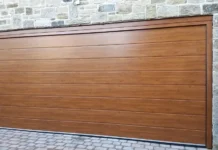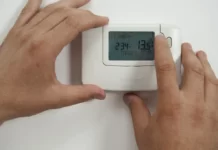Have you ever wondered whether or not power was being delivered to a particular outlet? A multimeter or multitester’s voltage readout will reveal this information.
A multimeter’s precise use will indicate whether or not the black and white wires are connected in the wrong order, whether or not the receptacle is grounded, and which wire entering the box is supplying power to the outlet.
A voltage detector can be used instead of a multimeter’s voltmeter, and a continuity tester can be used instead of the ohmmeter. In most cases, one of these tests can be used to determine what’s wrong with a residential electrical outlet.
1. Why Inspect an Electrical Outlet?
It’s a good idea to check the outlets in your house regularly for safety. Testing a wall socket could be done for a variety of purposes. When you’re thoroughly cleaning without wanting any watery substance to enter the outlet, or you’re performing repairs and want to be sure the power is off, you need to test the outlets. Or, when you’re attempting a DIY repair of a broken light switch or electrical outlet, doing a quick safety check is always a good idea.
For whatever cause, being well-equipped and well-informed is the best way to guarantee reliable data and personal security. To help you keep your house secure, we’ve outlined the fundamentals of inspecting electrical outlets.
2. Tools to Use
It is important to consider what equipment you need before beginning testing. Multiple gadgets can be used to verify the functionality of the wall socket. You can use continuity testers, non-contact analyzers, and voltage analyzers. They can be obtained for little cost and offer specific benefits in various contexts. However, the multimeter is the tool of choice for its versatility and ease of use. Click on How to Use A Multimeter to know its usage.
As its name suggests, the multimeter has capabilities and setups for various applications. You may test the voltage, current, and AC/DC circuits.
Although multimeters are inexpensive and widely available, the quality might vary based on the manufacturer. Learning all of its features could take some time. On the other hand, it is among the most versatile tools for electrical analysis and is simple to operate when checking an outlet.
Being cautious is usually a good idea while testing an electrical system. Hold the metal points of the multimeter using one hand. If an electric shock occurs, you can avoid having electricity go through other parts of your body by doing this.
Metal rods should be inserted into the neutral slot prior to the active one for safety reasons. Due to the current’s ability to flow through the human body, there is a higher danger of shock. Never let the metal tips come in contact. Consider seeking professional help from an electrician when you notice sparking.
3. Measuring Voltage
A multimeter can be used to measure voltage if the appropriate settings are used. Line voltage might be read by inserting a probe through each hole. The voltage should be between 110 and 120 volts when using a properly functioning outlet. If you’re not getting a reading, double-check the outlet and wiring.
4. Inspecting the Properly Grounded Outlet
Inserting one probe of a voltmeter detector into the outlet slot and another probe into the center screw of the receptacle will reveal whether or not the outlet is correctly grounded. If the light doesn’t come on after plugging it in, you should check the polarity of the outlet.
5. Testing the Outlet
You need to turn off the power before you start. After that, detach the outlet from its accompanying wiring. Place one probe of your multimeter through one of the outlet openings, and put the other probe on a terminal screw that’s closest to you. Make sure your multimeter is set to the ohms setting.
The meter needs to show that there is continuity. Conduct tests on the terminals and slots that are still available. After that, check the connection between the ground slot and the grounding terminal.
When two wires enter a box, one will lead to the fuse or breaker box, while the other will provide electricity to the other devices connected to the circuit. Switch off the power, remove the plug from the outlet, and put caps on each of the wires except for one black wire. This will allow you to determine which wire is the live one.
Once the power has been turned back on, connect one probe to the ground wire of the box and then connect the other probe to the black wire. If you receive a reading, the problem is most likely with the hot wire. In that case, the problem lies with the wire that connects with the other devices.
Turning off the power, moving the specific cap from one black cable to the other, turning the power back on, and then testing the wire that is not capped is a good way to double-verify anything.
6. Conducting a Polarity Test
Place one probe against the screw and the other into the wide slot. The neutral and hot wires are switched around if the voltage detector flashes. If the probe is inserted into either slot and the light does not illuminate, the wiring must be examined further.
Final Words
Now you know how to test the outlets for different reasons. Be cautious when you are doing any electrical tests by yourself. If there are bigger issues with the outlets, hire a professional.












